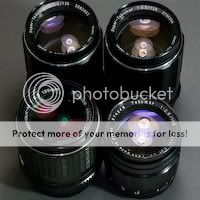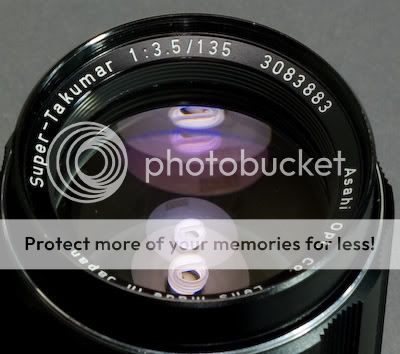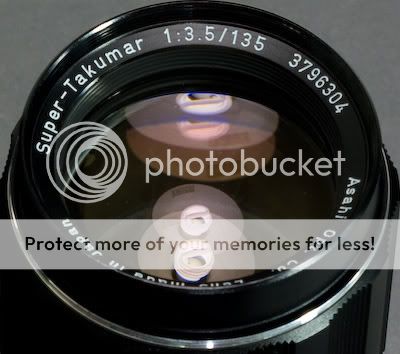 Originally posted by d.bradley
Originally posted by d.bradley 
I don't think the test setup is actually that condusive to testing lens flare. I think you're actually looking more at "blooming" which to my understanding is more to do with optical design than coatings.
Admittedly, I was using the broadest possible definition of flare: light misdirected by the lens onto the sensor. I have never formally studied optics, but my understanding is that there are two kinds of misdirection, which I will call reflection and scatter. The difference is between light hitting a mirror and reflecting back or hitting a white wall and scattering in every direction.
Most of the light reflecting off of a lens will exit back out of the lens, but some of that will reflect for a second time back into the lens and create a ghost--this is how those series of light discs appear in an image like the one you posted, Bradley, and is probably what most people think of when they hear "lens flare."
On the other hand, light can hit a lens and just scatter; much of that scattered light won't be reflected at all and will just continue on to the sensor in a diffracted wave rather than a beam, and some of that light will be scattered out of the lens and then reflected back at the sensor. Either way, the result is a more diffuse and indiscriminate brightening of the image. This is the sort of problem that lens hoods prevent, and may well be better called "blooming" to distinguish it from proper flare.
Naturally, having more surfaces in a lens--groups and elements--will provide more opportunities for light to reflect and scatter. But these lenses aren't all that different: I believe the 105 is a 4-4 groups-elements, therefore with eight surfaces; the S-T 135s are 4-5, with nine or ten surfaces; and the 135M is 5-5, with ten surfaces. There is going to be some difference between an eight-surface and a ten-surface lens, but the amount of that difference depends entirely on how well each lens avoids reflecting and scattering light.
SMC is supposedly good for a light transmission of 99.8%. I have no idea what the coefficient of refraction is on other lenses. If SMC is staggeringly better than other coatings, then the type of coating means more than the optical design of the lens. But if the coatings are equivalent then the number of reflective surfaces is the most important issue.
My guess is that different coatings treat reflection and scatter differently: some are better at reducing one than the other. I wouldn't be surprised if it is easier to decrease reflection than to increase transmission, meaning that scatter--bloom--is effectively increased.
If I were to hazard another guess, the main reason zoom lenses didn't catch on until the 1970's or so is because of coatings. A fourteen element lens is going to have huge problems with reflection and scatter unless the coatings are excellent. But for simple designs, like prime lenses, uncoated glass can do respectably well.
If there's a good reference for understanding this sort of thing, I would greatly appreciate a link. Optics have been fascinating me lately.



 Similar Threads
Similar Threads 
























